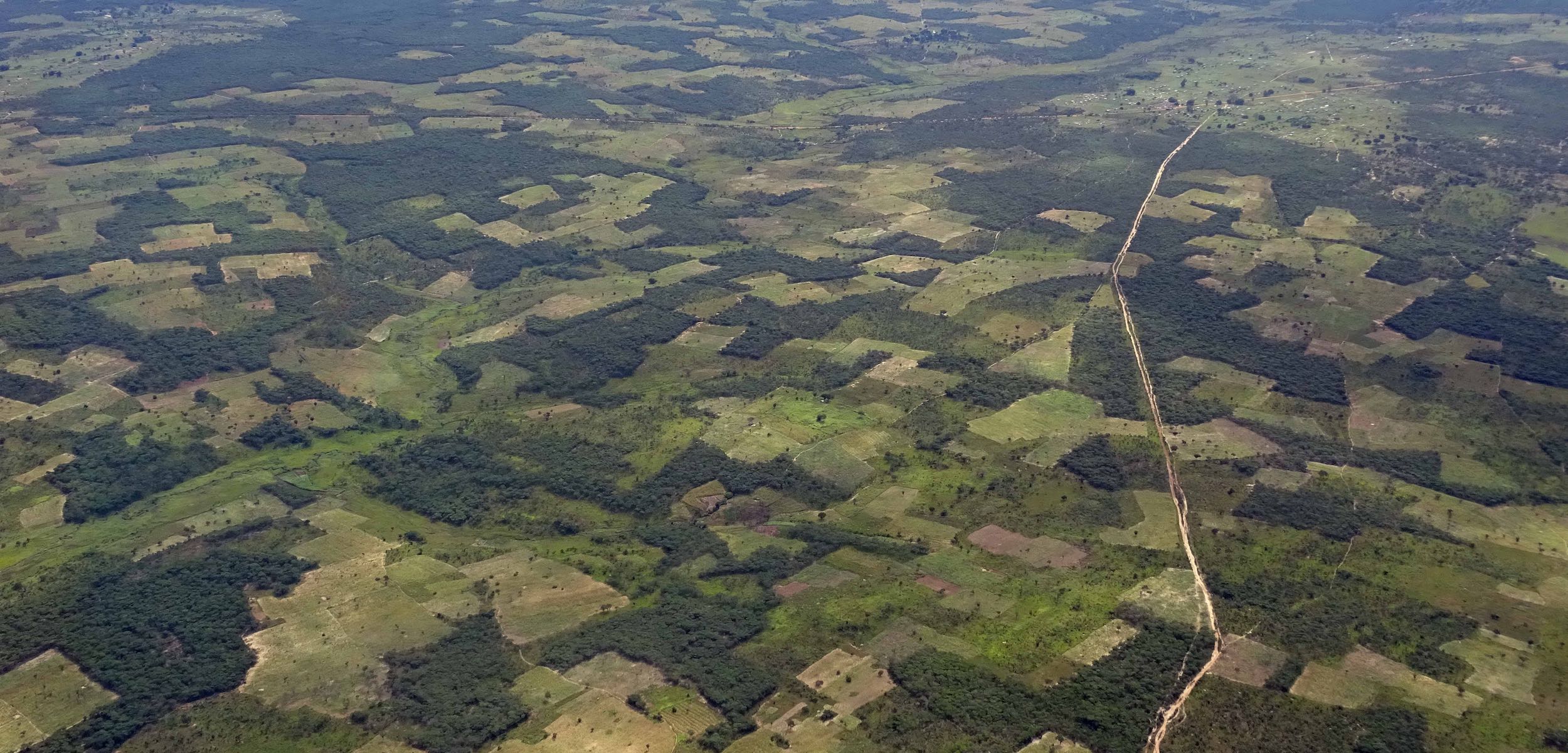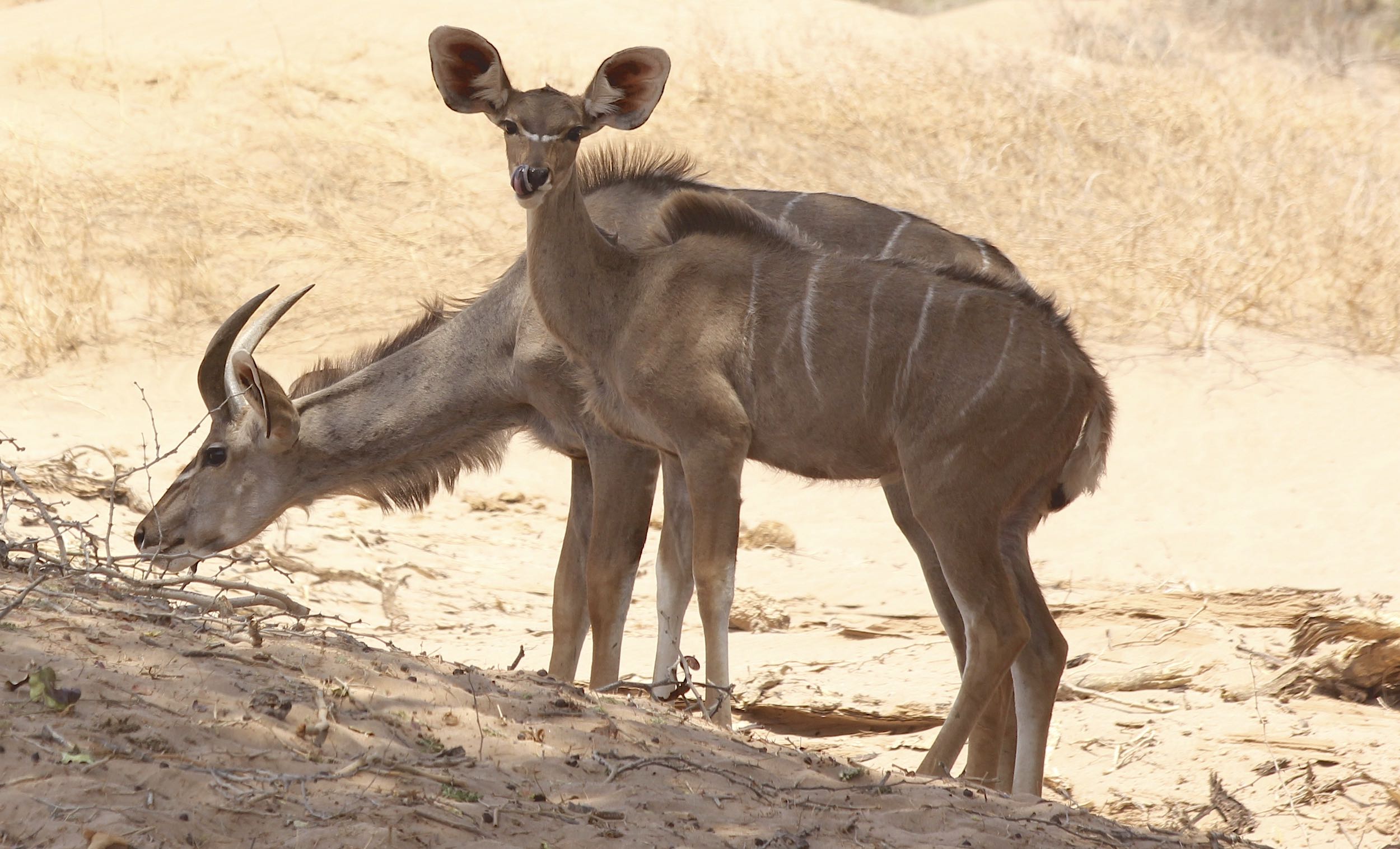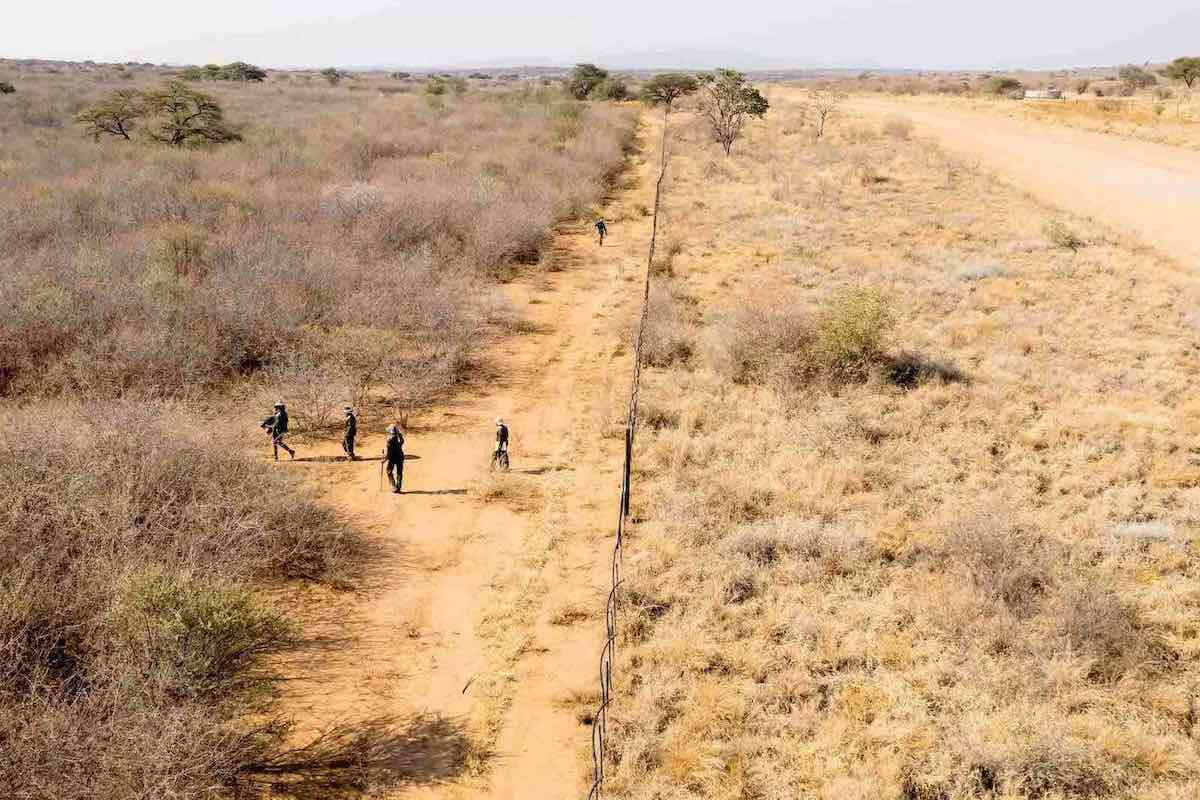
On the Edge of Namibian Enquiry
By John Mendelsohn
Ongava Research Centre
8th August 2020
A lucky chance recently came my way to join the expanded Ongava Research Centre (ORC), a privately funded institution dedicated to environmental studies, and fortuitously located along the boundary of Etosha National Park. My task is to help set a direction for the ORC’s studies and to establish mechanisms to support the research. This opportunity raised many interesting questions: What research should we do? What don’t we know? What is important for us to understand? Seldom do we think about those questions… it is perhaps easier and more gratifying to expound on the things we know… or believe. This seems adequate for the purposes of most environmental management, and conservation in Namibia generally operates on that basis.
And so here was an occasion to step back and think about what is not known and especially things that are important to understand. Before sharing some thoughts, I’d draw your attention to The Edge, an open forum for anyone who might be attracted to what is appropriately described as open-minded, free-ranging, intellectually playful… an unadorned pleasure in curiosity, a collective expression of wonder at the living and inanimate world… an ongoing and thrilling colloquium.
Have a look, it’s the best thing since peanut butter.
Most discussions on The Edge stem from questions, ideas and observations around things we puzzle over. That’s a useful springboard to help formulate the questions in this article which concern seven fundamental aspects of biology and conservation in Namibia. These are the sorts of things that need answers through scientific enquiry. I also hope that they will enjoy the focus of young, curious Namibian minds.
1: How can rural poverty be eradicated, and land degradation be reversed?
The greatest form of environmental degradation in Africa is shifting dryland agriculture. After several years of use, small-holder farmers need to shift their crops from nutrient-depleted fields to virgin soils in newly cleared areas. The practice is not only accelerated, but also necessitated by poor soils and a growing population with little access to money, and thus no other way to feed themselves. Cash incomes are now a necessity everywhere and for everyone, and in their absence rural people are obliged to sell local resources: bush meat, fish, ivory and rhino horn, charcoal, timber, and pangolins, for example. More of the natural world gets lost.
The link between poverty and environmental destruction is all too familiar in Namibia, especially in the seven northern and north-eastern regions. Substantial research is needed to find ways to break this cycle by addressing both the social and environmental costs. The enormous moral and economic dimensions of this challenge make it all the more urgent - and vital - as a topic for scientific study.
2: What controls wide-ranging animal movements?
Few places are sufficiently rich and large to supply all the resources needed by animals to live and breed throughout the year. Getting around is thus important for survival, particularly so in arid or semi-arid areas where rainfall (and plant production) varies greatly from time to time and from place to place. And so many species of birds and other animals move around to make the best of opportunities presented by patchy and unpredictable rainfall. What we don’t know is how they assess where to move to, when to move, and how long to remain in a place.
The effect of rain is often important, but only in a general way. For example, assuming flamingos at Walvis Bay (somehow) know that rain fell over the Etosha Pan a few days ago, they also need to know how much water now remains on the surface (bearing in mind that most rain immediately seeps into the ground) and whether or not there would be sufficient food in the Pan to make their journey to Etosha worthwhile. We simply have no idea how flamingos or other animals make these kinds of tough choices.
There are many other open questions about bird movements. Where did the thousands of Bradfield’s, Palm and Little Swifts that normally breed in Windhoek go during the last few, dry summers? Why do many birds flock into an area where rain has recently fallen, but not into another with the same recent rain? How do hole-nesting birds monitor potential nest sites during the non-breeding season so they can quickly start nesting when breeding opportunities suddenly arrive after the first summer rains? Most wetland birds move around to breed in ephemeral wetlands (those that carry water in certain, but not in other wet seasons) in southern Africa. But it is not known where all these wetlands are, or which are the most important and in need of conservation. I think we should know.
3: Getting the timing right
What factors control the timing of the long process of breeding and growth, which usually starts with the production of eggs or seeds and only ends when an animal or plant reaches maturity? The challenge is this: the start of breeding should be triggered at the right time so that later, more demanding stages of breeding happen when there is adequate sustenance for the growing young. Eggs or seeds are relatively cheap to produce, and embryos need little sustenance to develop compared with larger offspring who require greater investment and nourishment. That’s simple biology. Incidentally, the triggers that start breeding are called proximate factors, while ultimate factors are those that largely determine the success of later survival. Changing day length and rainfall are often proximate factors, while food supply is generally the most important ultimate factor.
Here is an example. What proximate factors stimulate springbok to rut, come into oestrus and conceive? Getting the start wrong may mean that foetuses fail to develop, or milk supplies are inadequate for young lambs, or young weaned springbok find themselves without adequate grazing or water to drink. Bear in mind that springbok lambs are born on average 25 weeks after conception, and then only stop suckling later at an average age of 17 weeks. Ideally, a ram and ewe thus need start to matters when they can be reasonably confident that conditions over the next 42 weeks will be favourable for their foetus, suckling and then weaned lamb. Timing is important!

In a similar way, how do frogs, millipedes, terrapins, scorpions and termites judge when to waken and emerge from their underground retreats? When it first rains, or better to wait for more rain, more plant growth and more favourable opportunities for feeding and breeding? Which strategy wins: gambling on short term options or waiting for potentially better returns later in the season? What mechanisms are used to make those choices?
The same questions hold for plants: when is it best to sprout new leaves, to flower, to disperse seed, and to germinate? Should all seeds germinate at once, or is it better to stagger them into different cohorts? How do these strategies differ between annual plants that have only one growing season and perennials that survive for years?
4: Determinants of growth, survival and reproductive performance among large herbivores
Conservation measures in Namibia are mostly directed at large herbivores: kudu, oryx, impala, rhino, lechwe, elephant and giraffe, for example. These animals have value in their own right, of course. But we also conserve them because the greater their number, the more we earn from tourism, live sales, meat and trophies. Numbers are important.
Surely, then, we should know the details of what makes their numbers: what proportions of young herbivores survive to breed, at what age does breeding start and when does it stop, how often do they breed? Which factors reduce the numbers of adults and at what rates? Ecology 101.
And yet, while the major factors – nutrition and water supply, health and disease, predation – that affect herbivore populations are pretty clear, we know very little about how these limiting factors combine to determine herbivore populations. Why does one farm have 100 kudu, but its neighbour 300? How does drought decimate populations - what age groups are hardest hit, and by which specific processes: a lack of water or food, increased disease or predation, or combinations of any of these?
5: Impact of parasites and diseases on animals and plants
Rabies and anthrax are quite well known, as are their effects on certain large mammals and humans. But there are lots of other diseases and parasites. What and where are they, what species do they affect, how, when and why?
The methods of transmission of many diseases are not known, nor are the species that suffer most from specific diseases. Could it be that pangolins, martial eagles and aardvarks are uncommon because diseases limit their longevity or ability to breed? And why are the many rare plants, reptiles and frogs in Namibia so few in number, or limited in distribution? How is behaviour, habitat selection, water and energy intake influenced by risk and the measures animals might take to avoid infection?
Herbert Schneider in his 1994 book Animal health and veterinary medicine in Namibia lists dozens of different diseases and parasites then known to afflict large wild mammals: 22 parasite species found on kudu, 18 parasites on warthog. Hartebeest and oryx are each affected by 8 different diseases. These cover the relatively well-studied species. How many more diseases and parasites that affect other animals and plants in Namibia await discovery?

6: How do widely spaced animals communicate and maintain a social network?
Namibia has many naturally rare animals. Neighbours are widely spaced, many perhaps at distances of 10, 20, or even 30 kilometres. Examples are servals, pangolins, black-footed cats, Cape foxes, wild dogs, spotted hyaenas, African wild cats, aardvarks, hedgehogs and pythons. Doubtless there are many others. While some of these are quite abundant in some places, elsewhere their populations are sparse.
A major challenge faced by these animals is this: how to know their social landscapes. How do they find mates, and how do dispersing young animals find gaps where they can settle, or challenge ageing residents for their territories? Are sounds or smells produced that can be detected 10 or 20 kilometres away? Do marking spots become traditional information hubs, post offices if you like, regularly visited and marked by everyone in the neighbourhood; where each individual leaves a distinct pheromone cocktail to reveal its gender, age, sexual condition… like Facebook posts stuck on a tree in the bush.
7: How can fear among wild animals be mitigated?
The Earth is dominated by people and animals that fear them. Those animals living in the remaining patches of suitable habitat spend much of their time avoiding people, secretively limiting their feeding to ensure they won’t be seen, whether in hidden places or at silent times. But we also know that animals can become accustomed to our presence and live happily alongside us. How does that acclimatisation happen? The scientific literature is chock-full of studies describing how animals fear people. Now let’s encourage research on how figurative and literal fences can be taken down between us and those who journey with us on this planet.
Of course, not all animals are welcome bed-fellows – lions and mosquitoes should keep at a distance, and some animals, such as pangolins and abalone are best off looking after themselves in secluded places!
A similar challenge concerns measures to encourage animals to diversify their food and habitat choices, to being more generalist and less specialist species. The greater the diversity of food they can eat or habitats they can occupy, the more options and possibilities they will have to breed and live. The extremely successful Mauritius Kestrel conservation programme employed this approach. The total world population in 1974 was down to just 3 males and 1 female kestrel, all living in one remaining patch of primary forest. Dozens of kestrels were then bred in captivity, many of which were released and acclimatised to living in secondary forests and other degraded habitats where a much wider range of prey was available to them than before. Nowadays there are about 800 Mauritius Kestrels. Go and see them.
How you can be a part of the quest for knowledge
These questions are intended to spark curious minds, to stimulate the pursuit of answers to advance both science and conservation in Namibia. For those who see merit in that crazy, but fun chase of knowledge, I suggest two mental exercises.
First, imagine what you would do if you were a camel-thorn tree to help your seeds germinate in the best places and at the best times. Or, if you were a rare bat that needed a mate? What would you do to solve that or any other logical problem?
Second, train yourself – at least for some of the time – to look for what you don’t know, and what you don’t see. When next taking a walk, list in your mind the plants or animals you expect to see, but don’t. Ask yourself why. Curiosity is a pursuit of answers. But answers don’t come before questions. Set the quest and have fun.

For more information about the
Ongava Research Centre
visit:
www.orc.eco
For more information about the
Ongava Research Centre
visit:
www.orc.eco
For articles on similar topics, please click one of the following options:












